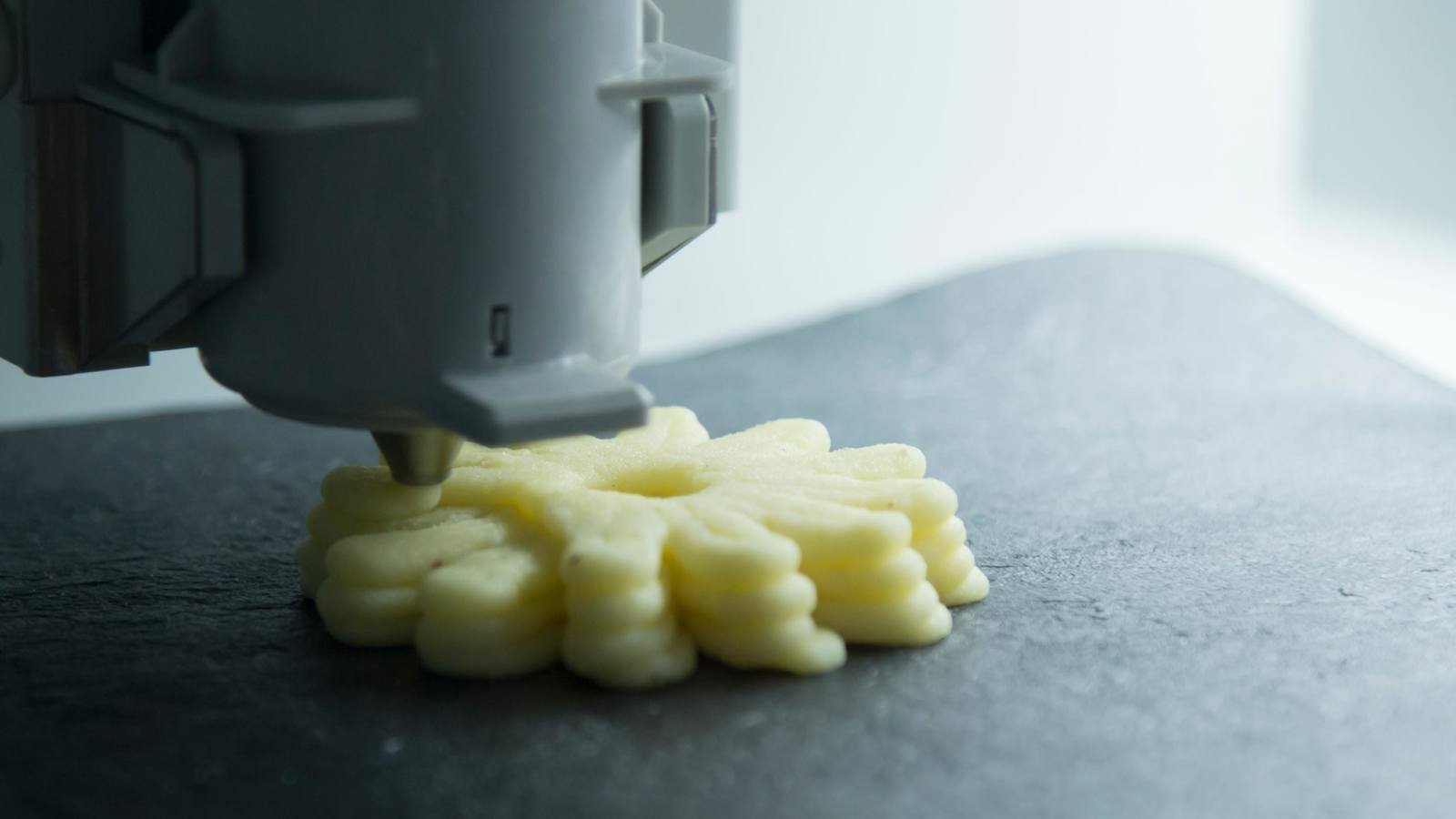
Cutting-edge 3D printed food: Innovations, impact, and the essential role of texture analysis

The world of 3D printed food is evolving rapidly, blending creativity, sustainability, and science. Recent developments highlight personalised nutrition, plant-based innovation, food security, and accessible culinary experiences for those with dietary restrictions - all thanks to advances in 3D printing technology.
Personalised nutrition and ingredient innovation
Research into tailor-made meal bars, snacks, and ingredient blends is gaining traction. Scientists at TNO are now able to print foods fortified with plant-based proteins and functional additives to match individual nutritional needs, whether for vegetarian diets, sports nutrition, or allergy-conscious eating. The precision of 3D printing allows for fine-tuning nutritional profiles and organoleptic properties, especially texture and mouthfeel. Read more
Sustainability and food waste solutions
A new wave of 3D printers can convert protein-rich food waste - like okara (soy pulp from tofu production) or microalgae - into nutritious, customised snacks and meals. These innovations open potential pathways to reduce waste, promote circular food economies, and make use of underutilised ingredients, all while maintaining familiar or novel textures through advanced processing. Read more
Seafood, meat, and gourmet customisation
The food tech sector is breaking boundaries with successful 3D-printed fillets of fish, steak alternatives, eel, shrimp, and premium plant-based cuts. Companies such as Steakholder Foods are pushing product development beyond simple shapes, focusing on mimicking the layered muscle fibres and textures found in traditional meats - crucial for achieving genuine mouthfeel and consumer acceptance.
Chefs and food manufacturers are embracing 3D printers not only for personalised nutrition but also for gourmet presentations, creating desserts, meals, and chocolates with intricate shapes and textures not possible by conventional means. Read more
Medical and accessibility advances
3D printing is making nutritious, safe-to-swallow foods accessible for those with conditions like dysphagia (swallowing difficulties). Researchers have developed multi-ingredient foods with modified textures that are both palatable and visually appealing - moving beyond bland, pureed meals to offer better quality of life for patients. Read more
The critical role of texture analysis
Texture is at the heart of successful 3D printed foods - whether replicating the snap of a biscuit, the bite of steak, or the creaminess of a dessert. A Texture Analyser is essential throughout product development, providing objective measurement of physical properties like firmness, snap force, stickiness, and compressibility.
How texture analysis drives innovation:
- Quality control: Ensures batch-to-batch consistency in texture for commercial viability.
- Process optimisation: Guides adjustments of printing parameters (nozzle size, extrusion rate, layer thickness) to achieve desired textural outcomes.
- Ingredient validation: Determines the optimal level of new ingredients (e.g., fibres, gums, proteins) before texture changes negatively impact consumer experience.
Texture Analysers are used for testing everything from microalgae-enriched snacks, printed biscuits and chocolates, to protein-rich meat alternatives and dysphagia-friendly meals.
In effect, texture analysis transforms 3D printed food from a tech demonstration into a reliable, delicious product - ensuring that innovations delight consumers, whether in gourmet restaurants or home kitchens.
The field of 3D printed food is progressing from novelty to necessity, offering highly customisable nutrition, sustainability, and improved accessibility. At every stage, Texture Analysers are vital tools for innovation, guaranteeing not just safe and nutritious food, but also a satisfying sensory experience. As this industry grows, expect texture analysis to remain at the forefront - helping creators move from concept to plate with confidence. Read more about our solutions for testing 3D printed food.








